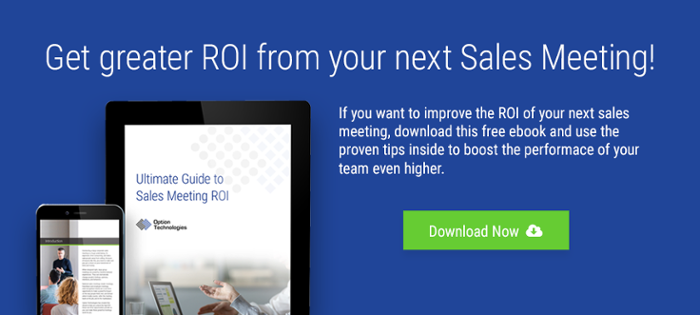As the head of corporate training and development, you are tasked with planning and organizing the national sales and training for the company. You’ve taken the task and run with it – you’ve got the venue set in a desirable location, you’ve handled all the travel arrangements, hotel accommodations, and guest speakers, the catering is all lined up, and the A/V equipment rental is set. You’re golden, right?
Budget Bust-Up
Not so fast. The CEO has called you in to discuss your plans for the big sales affair. “$400,000? That’s a lot of cash.” she says to you. Uh-oh.
“What do I get for that? What’s my return on investment? What’s going to be such a big takeaway that I need to send my people on basically a learning vacation? Is this trip going to fire them up that much more than having small group sessions here at Corporate? Without proof of efficacy, how do I know I’m not wasting time, resources, and money?
Forecast this and we will see if this is the best way to do this meeting. Maybe the return will be so great that it’ll be the best investment we’ve made as a company, but we won’t know until we calculate that.”
Why is ROI So Important?
The CEO has made a great point. In today’s world, every dollar spent by the company needs to not only be accounted for, but show it’s return. As a corporate training coordinator, knowing how to calculate the ROI of your sales meetings ahead of time will:
- Give you peace of mind that you are budgeting accurately and effectively
- Help you avoid uncomfortable meetings with the upper management in the future
- Show measureable gains to stakeholders
Calculating ROI
How do you define the returns on something like a sales meeting? This can be broken down by answering these questions;
- Will those involved in the meeting save time by converging in one large group as opposed to one-on-one training sessions?
- What is the impact to the corporate culture of having the whole salesforce together as one team, under one roof?
- What is the power of the keynote speaker’s endorsement and speech?
- What percentage of employees will apply the training in the field?
- What sort of expense is saved by maintaining a small training staff at corporate headquarters to generate large-scale training events (as opposed to a large training staff working in smaller training situations)?
- What sort of sales increase is expected from a highly motivated and “fired up” sales staff?
- What will the general feeling from the sales staff be regarding the “reward” component of a major trip such as this sales meeting?
- What is the opportunity value of having the CEO able to address his entire sales force in one “Town Hall” meeting?
This sort of measurement must be a part of the planning process - from determining employee satisfaction and corporate loyalty to true, down to numbers financial impact, these things show the actual effectiveness of the sales meeting; which is precisely what the CEO – and stakeholders – want.
Improve ROI with Interactive Technology
How do you improve overall staff engagement, ensuring the success of your carefully planned meeting? Integrate interactive technology throughout the sessions. This will not only keep your team awake and alert as they listen to speakers all day long, but it will increase the likelihood of their actually understanding everything that’s presented to them.
Another advantage in adopting interactive technology for your national sales meeting is the immediate feedback you’ll get from freshly invigorated sales pros. When they’re encouraged to tell you what they think about the sessions just after they’ve finished them, you and the speakers will get a more accurate assessment than you’d get if you give them a paper survey at the end of the meeting.
Ready to get the most bang for your buck for your company’s national sales meeting, improving your ROI as well as the meeting’s value? Click here to request a free demo!


